It is mid summer and unusually for England the temperature is over 30c Here is a quick 3 minute look round the garden with only the sounds of birds, water and a small plane that flow over at the wrong time!
I hope you enjoyed that.
It is mid summer and unusually for England the temperature is over 30c Here is a quick 3 minute look round the garden with only the sounds of birds, water and a small plane that flow over at the wrong time!
I hope you enjoyed that.
Its raining, raining hard and for the last 24 hours. The first significant rain we have had for three months. The garden really needs it so I must not complain and it gives me a chance to update the blog.

Some of you who have been following Glebe House Garden will remember the area behind the garden wall which had been used as a dumping area and was badly in need of a plan.

I reported on the development as it happened. Planning for the future – a design challenge, Planning for the future – a design challenge II and Planning for the future – a design challenge III. Now it is looking great. The posts supporting the trees have been removed, the trees have developed and are growing well and the hard landscaping has softened. The trees are Sorbus ‘Autumn Spire‘.
Karen (Bramble Garden) visited Glebe House Garden last week. Although she has been here many times before this was the first time she had seen the final development for this part of the garden. As well as her normal kind comments she complemented us for having created a distinctive area within our garden. Many thanks to all of you who input to our development. The area looks great with only a minimal effort to maintain it.

The large pond is being a delight this year. Although we have had a lot of sun the water has stayed crystal clear. There is no technology keeping it clear. It just relies on the plants keeping the water balanced.


With the clean water and warm temperatures we do get grass snakes that spend hours swimming (and hiding) in the pond. I assume they are after the fish and newts.

The border beneath the pleached lime hedge has been planted with Rosa ‘Alfred de Dalmas’, Alliums (over now with seed heads removed to control self seeding) and lavender. The lavender has always been a challenge, quickly growing woody and scraggly. So we have just removed the Lavandula augustifolia ‘Hidcote’ and replaced it with Lavandula augustifolia ‘Vera’ and hope for more success. I also plan to prune it in the autumn rather than the spring as that is the current RHS recommendation.



This small bed of Rosa ‘Irene Watts’ was renovated in 2016 when all the plants were cut to about 1 inch above the soil level. At the time many people thought I had gone mad! but they came back well and are continuing to perform. The one bush without flowers was a replacement we put in this year.



With our back to the bed of Rosa ‘Irene Watts’ the Geranium sanguineum striatum on either side of the steps is doing its thing. Apart from cutting it back at the end of the year it requires little help and always does well. If you only had room for one geranium I would always recommend this.

The lawn on the left is also where we used to have an old apple tree with Rosa ‘Rambling Rector‘ climbing up it. This blew down last year and the whole area was cleared including the rose. It was going to be impossible to replace in the short term and although we were sad at first it has opened up different views across the garden towards our new wild flower meadow.

The lost of the apple tree has also given us the opportunity to enlarge the flower bed along the top of the wall between the lawns.

The turf is being recycled to turf the hole left by the apple tree and some damaged lawns elsewhere. This photograph also shows how the lost of the tree has opened up the view to the meadow beyond this part of the garden.


A couple of the new roses that we planted this year have just started flowering. Beautiful!


This is a large circular bed in the middle of the garden. This half of the circle faces south west and gets any strong winds etc. For some time we have not really had a good plan for it but over the last couple of years we have been trying to develop a style of planting that has been promoted by Piet Oudolf, using grasses and perennial plants. At last it is beginning to achieve what we had hoped for.

Lastly I am sure you will know that we have been in lock-down to control the spread of Coronavirus. Following the announcement that we could have meetings of up to six people in the outside provided we keep to the 2m social distancing we had a committee meeting for the Leicestershire & Rutland Gardens Trust in our garden! Unfortunately it was on one of the few cold days which certainly helped us have a short meeting.
May has been one of the sunniest on record and no rain either. It has been a fight to keep some plants happy. But not roses! The following photographs show the development of some of the roses in Glebe House Garden. There are more to come but they can wait for another blog.

It seems we are always finding gaps for new roses. Here nine arrived on May 14th. They included:
| Rural England 8×6 Rambling Pink |
| Buff Beauty 5X5 Yellow |
| Swan Lake 8×6 White/Cream |
| St Ethelburga 4X3 Light Pink |
| Mme. Pierre Oger 4X4 Light Pink |
| Macmillan Nurse 3X3 White/Cream |
| Horatio Nelson 4X4 Dark Pink |
| Irène Watts 2X2 Light Pink |
These have all been planted and are being watered regularly.

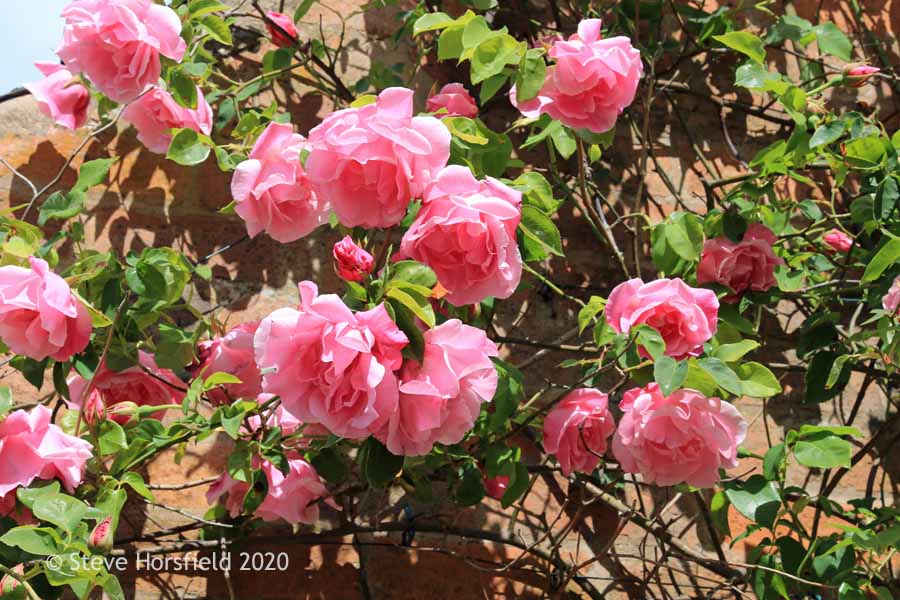

One of the earliest roses is Rosa ‘Madame Gregoire Staechlin’. It does not repeat but puts on a fantastic display which can be seen from the lane by our house so, as a result, we get lots of people wanting to know what rose it is.


Rosa ‘Old Blush China’ another early Rose. Not really a climber but can be trained up a wall. It dates from 1750.





Rosa ‘Alister Stella Grey’ a fantastic rose that keeps flowering for a long period.

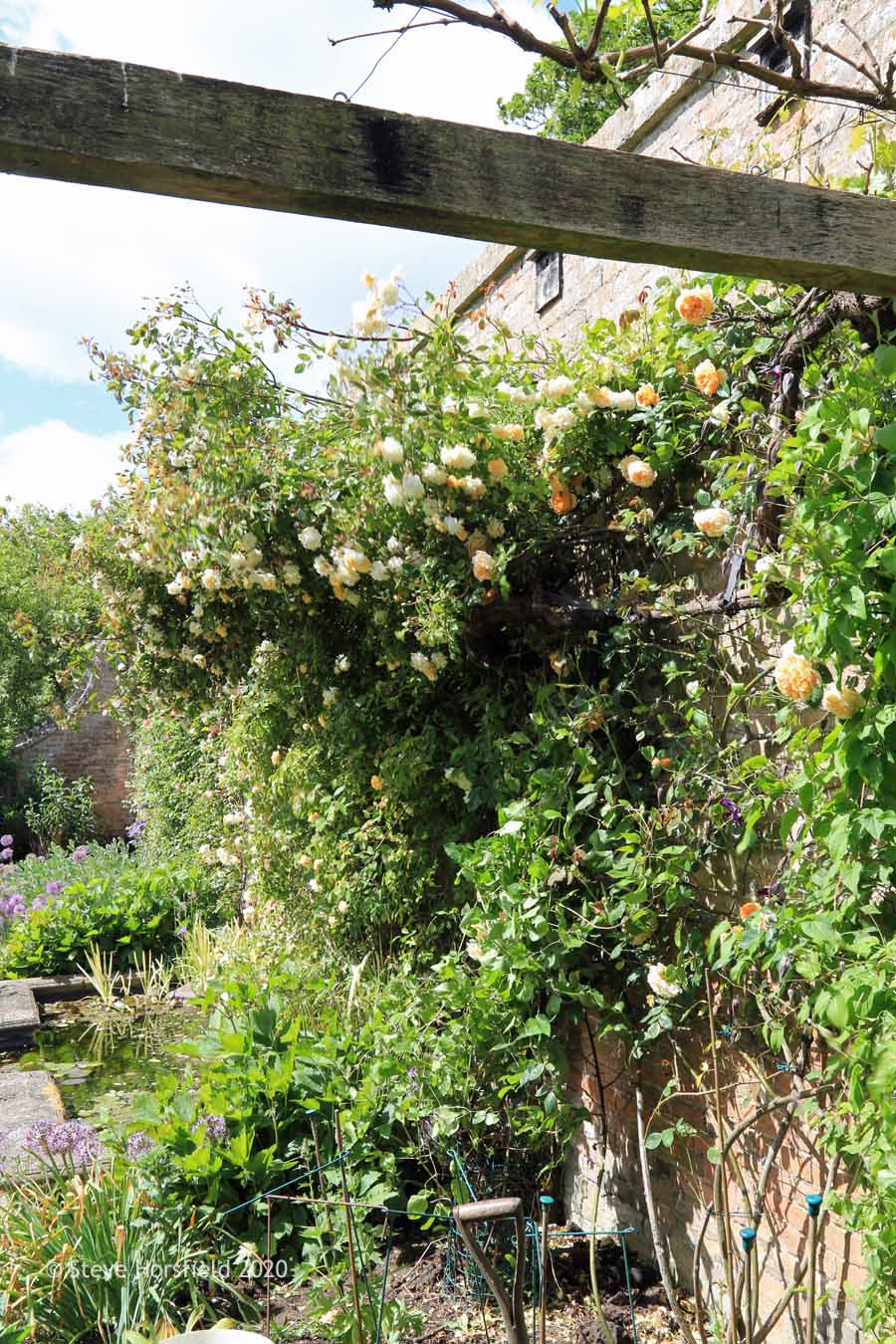
As always in gardening things can go wrong. Just as it was looking great we had some strong wind that almost completely blew it off the wall, breaking the horizontal wires. Just another unexpected job that keeps us busy!
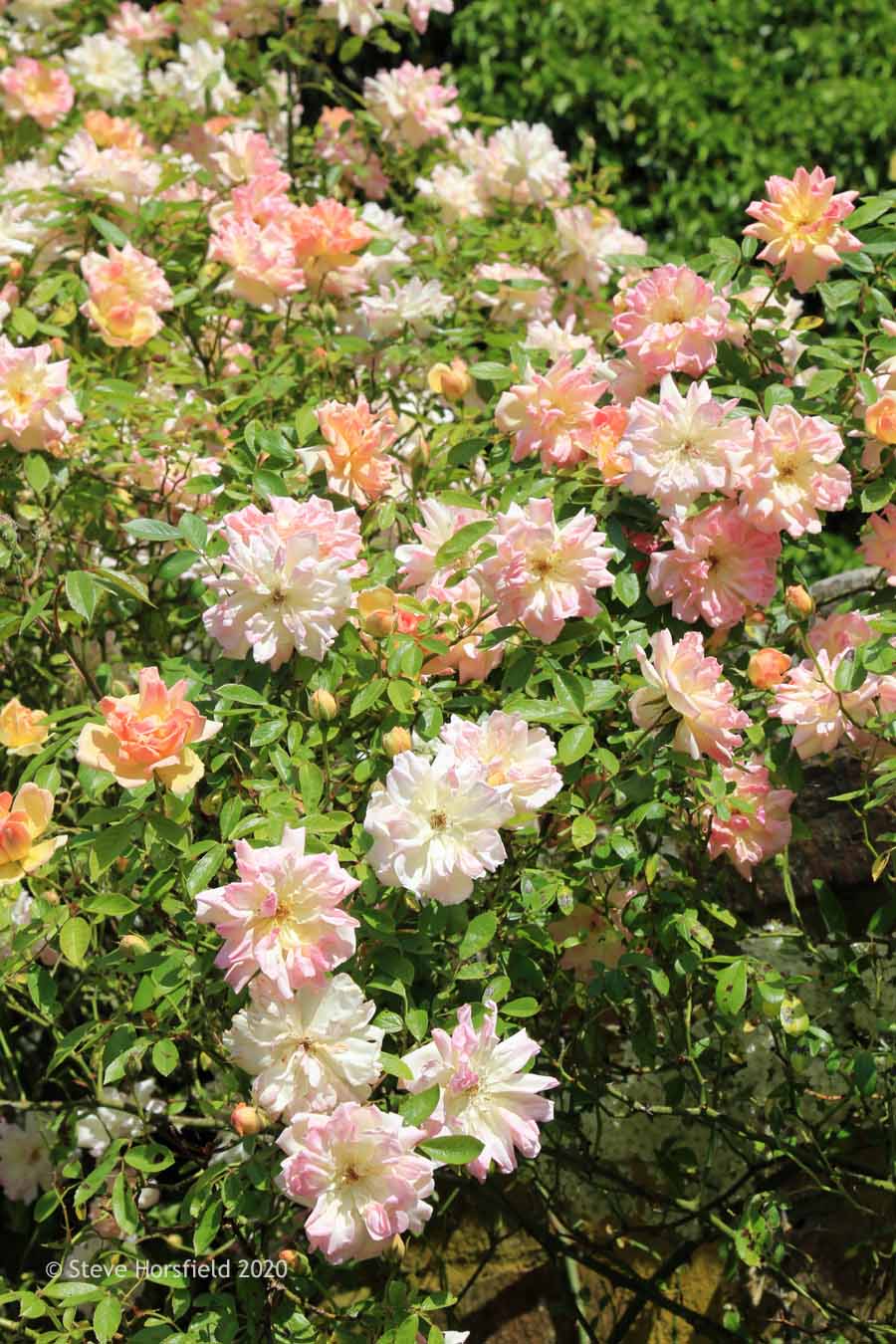
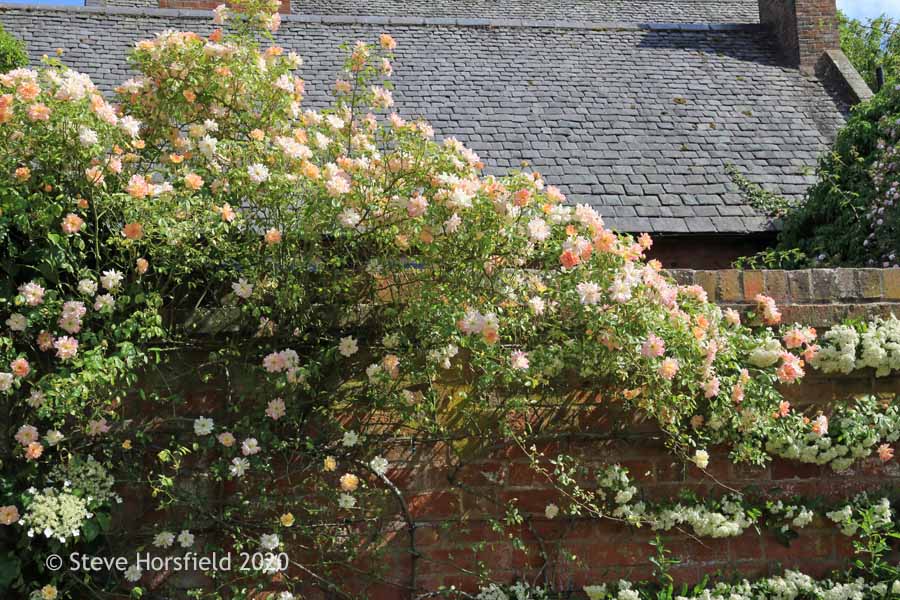

Rosa ‘Phyllis Bide’ This is a rose of truly rambler-like character, which has the benefit of reliably repeat-flowering.

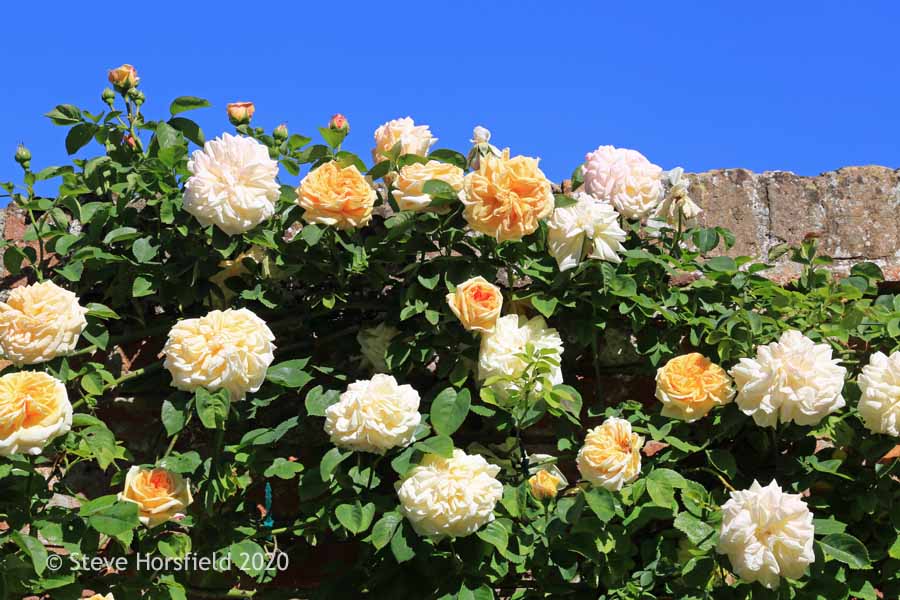




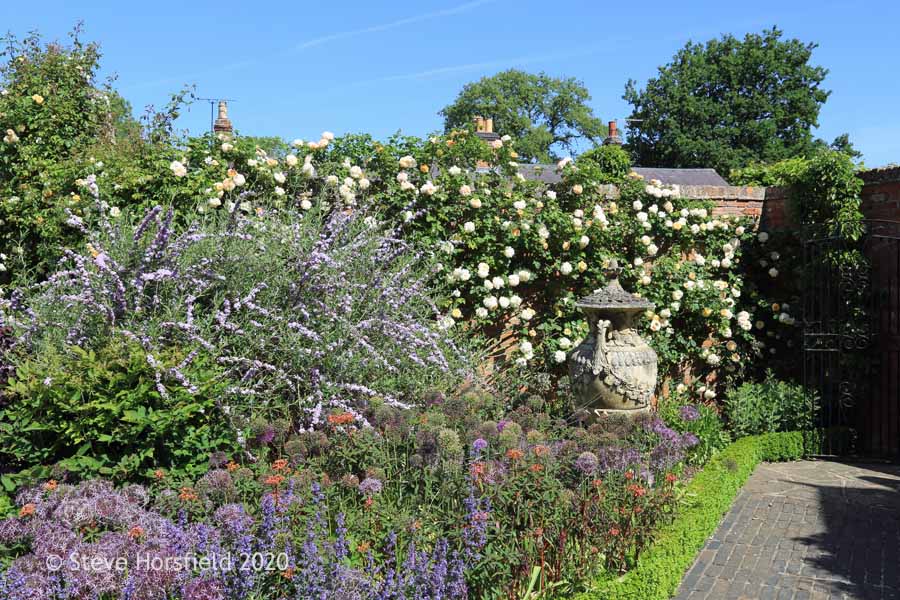
One of our favorites, Rosa ‘Alchemist’. This rose was in the garden when we bought the house 26 years ago. A robust climber, bearing full, old style, rosette-shaped flowers of golden-yellow flushed with orange and a strong fragrance.





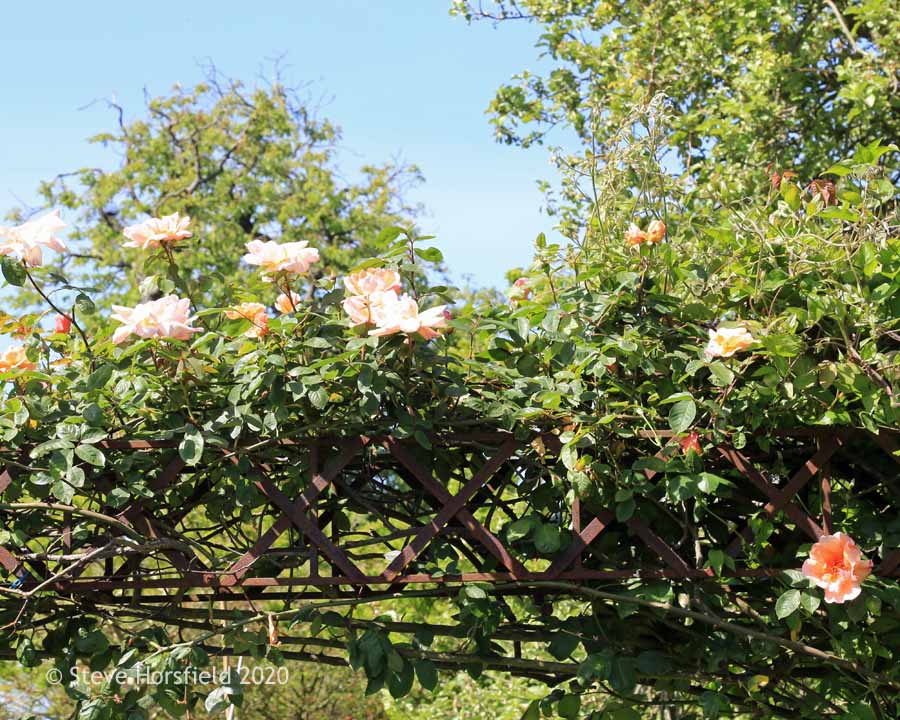


The metal arches in the garden effectively have three roses growing on them. The two that are flowering now are:
Rosa ‘Meg’ a large, almost single, beautifully waved flowers. Delicate pink-apricot colour, with red-gold stamens. This is one of our favorites and works well with some honeysuckle which is growing up one of the brick pillars and is about to flower.
Rosa ‘Lauriol de Barny’ an old rose variety. Very beautiful, silvery-pink flowers with a strongly fragrance.



Below a pleached lime hedge we have a row of about 35 Rosa ‘Alfred de Dalmas’. Introduced in 1855 this little moss rose has clusters of medium sized, creamy-pink, semi-double flowers and a strong perfume. Not fully out yet but will look incredible in a week.


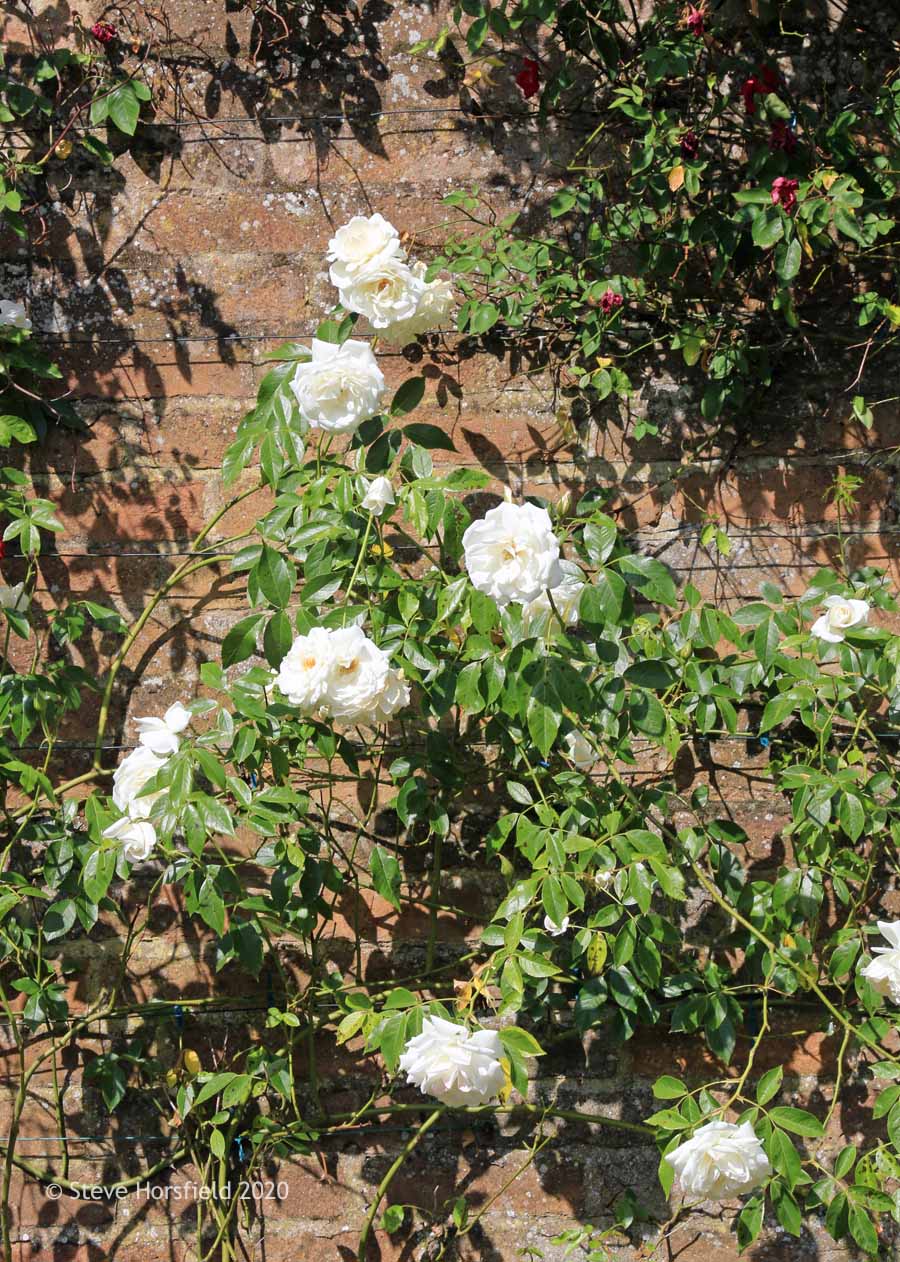
Rosa ‘Mutabilis’ a very unusual china rose with incredible flowering ability and good health. Flowers throughout summer and autumn with pretty, single, scented blooms of honey-yellow to orange, ageing to cerise red. Take no notice of the rose nurseries that say is only grows to 2m. Here it is at the top of the wall at 4m.
Also on the same wall is Rosa ‘Iceberg’ which seems to take its time to get going but I think it is starting to realise that we expect it to cover the whole wall and intermingle with the Mutabilis.


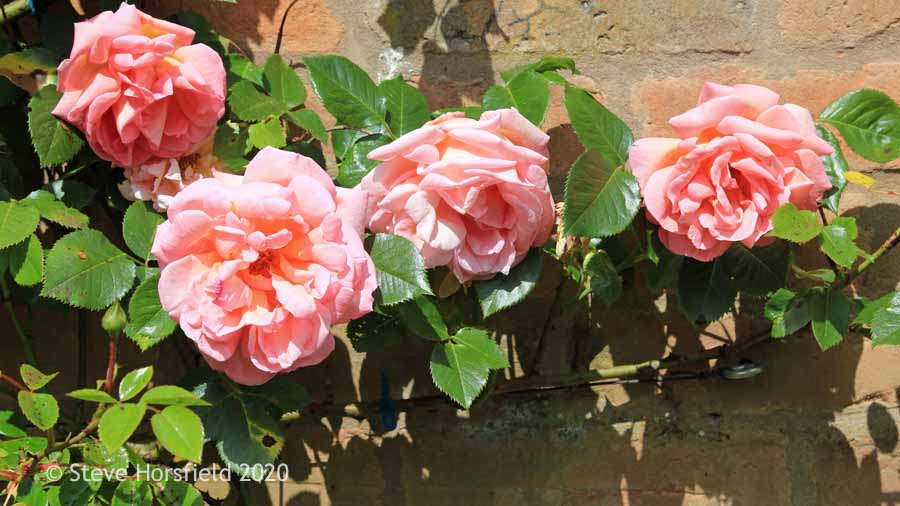

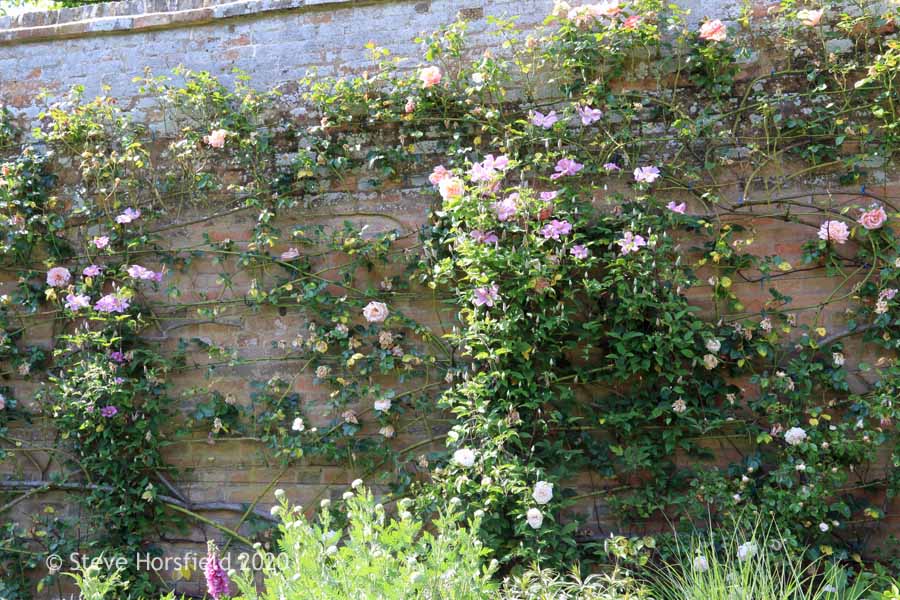
Rosa ‘Shot Silk’ is a star on the wall during all of May but is coming to the end now. We have grown a number of clematis up the rose to extend the interest. You can see Clematis ‘Comtesse de Bouchaud’ coming into flower.
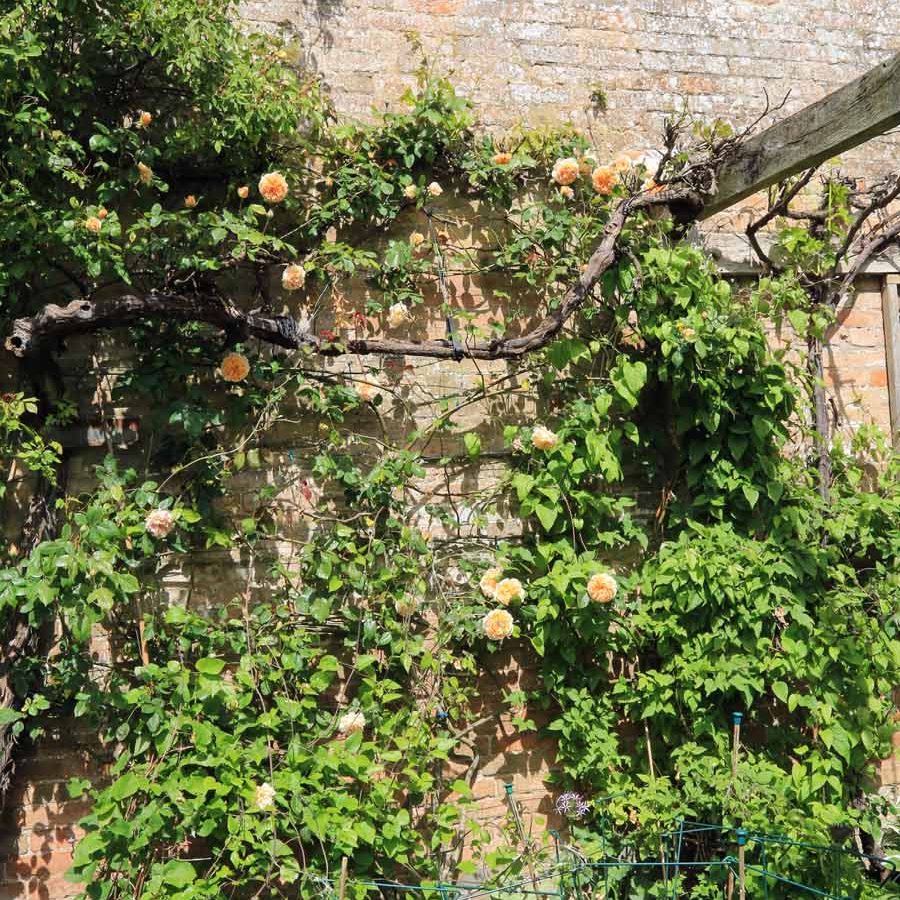

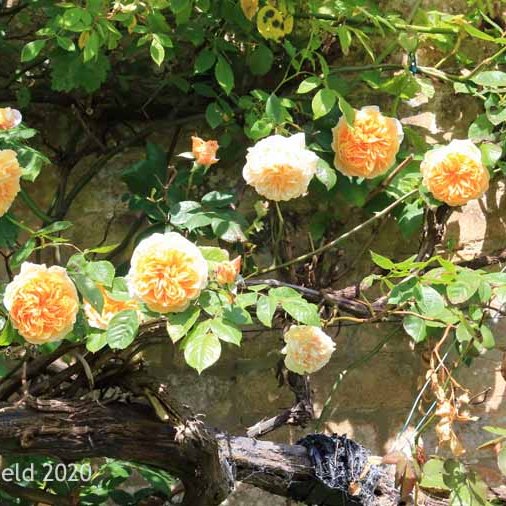

Rosa ‘Crown Princess Margareta’ has quite large, apricot-orange flowers, in the form of neatly arranged, many petalled rosettes. They have a strong, fruity fragrance. It forms a tall, slightly arching shrub with plentiful glossy foliage. Bred by David Austin, 1999.
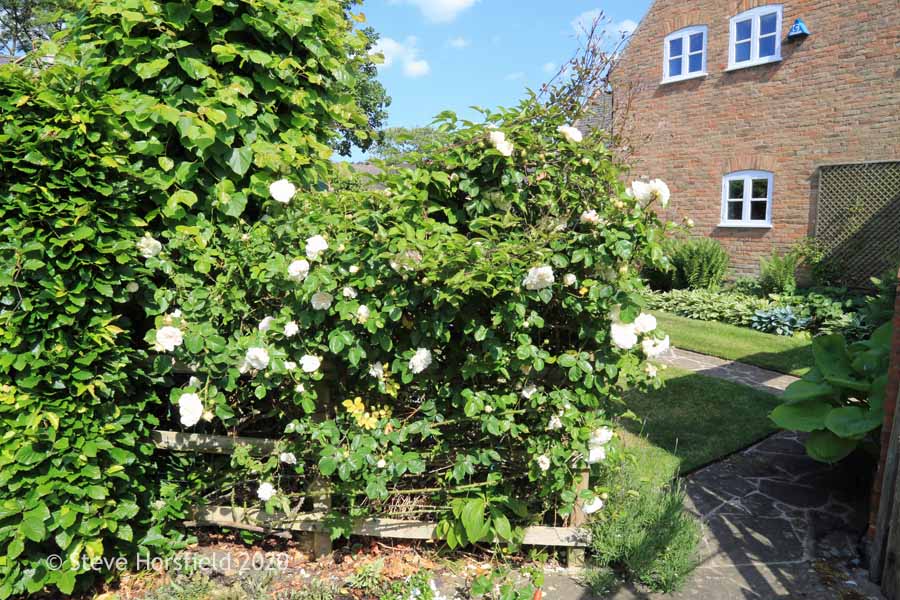
Rosa ‘Sombreuil’ was deliberately planted here next to the entrance to the garden. It is very fragrant and fills the whole entrance area with its fragrance.
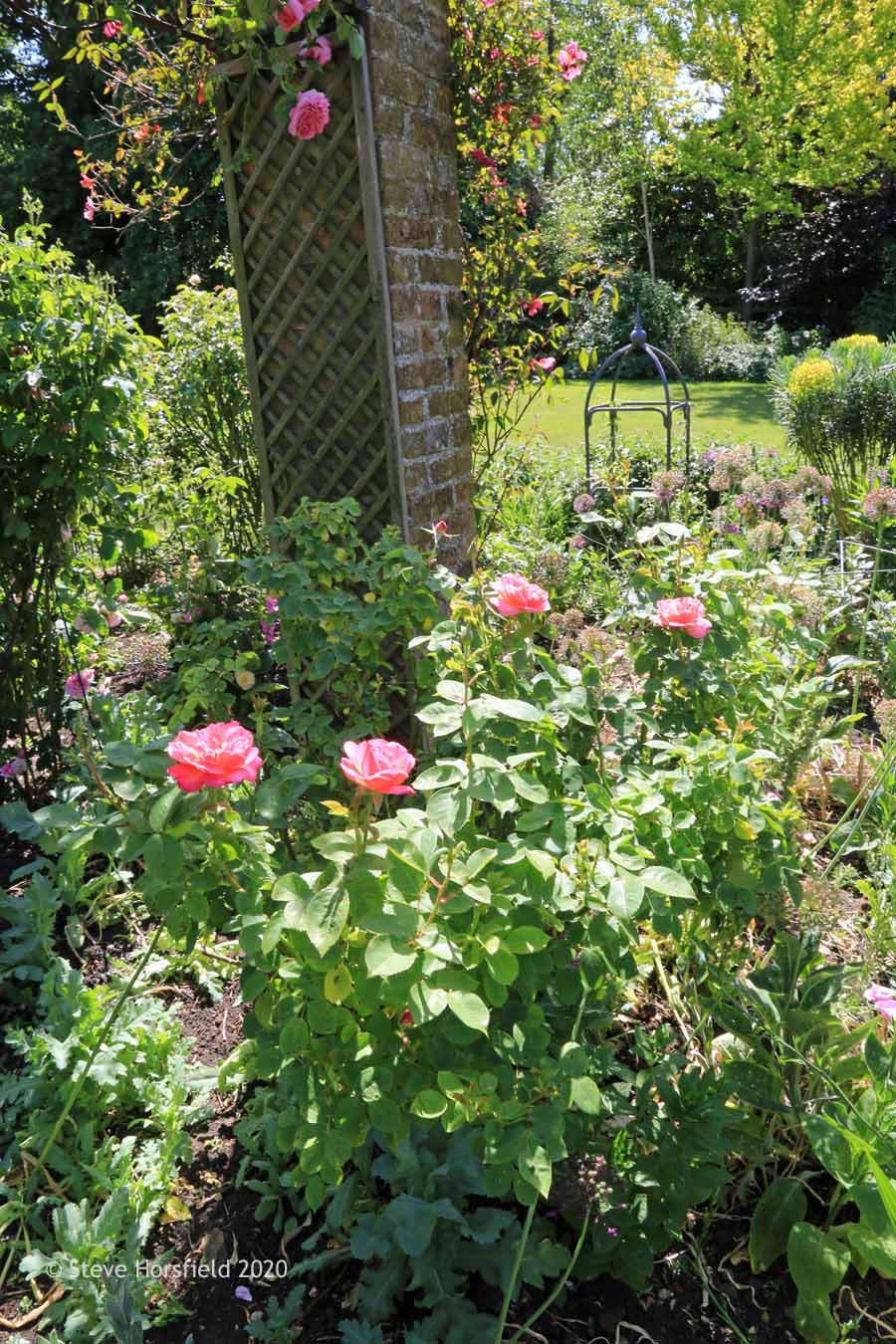
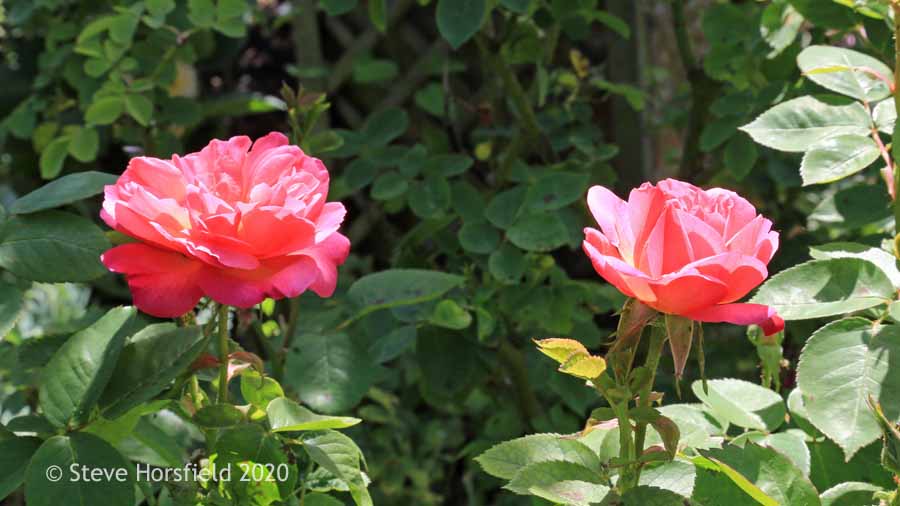
Rosa ‘Louise Odier’, has lovely richly fragrant flowers of a bright pink, shaded with lilac. Introduced in 1851.



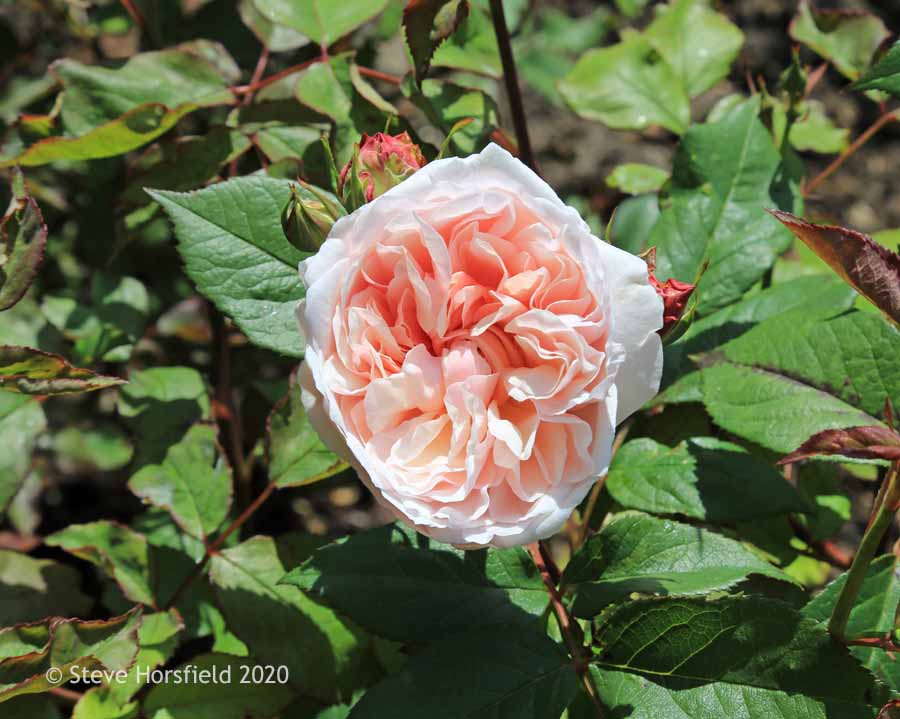
These Rosa ‘Irene Watts’ has been in our garden for around 20 years and with loving care they still look good. However, two of the new roses are destined as replacements here for a couple of the roses that had stopped performing.

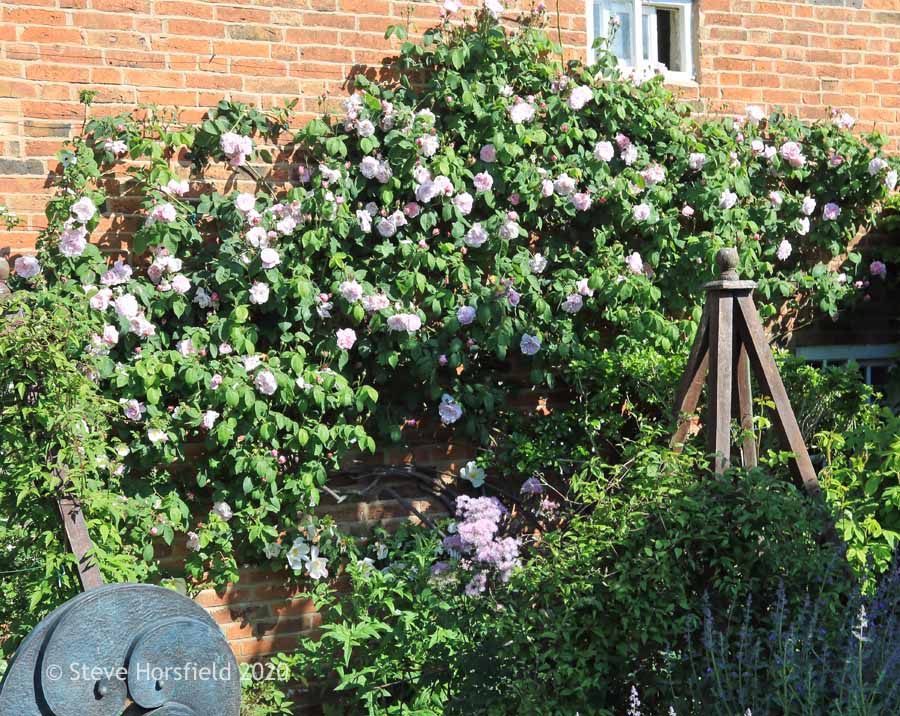

Rosa ‘Fantan Latour’ a prolific flowering rose that has been trained up a wall. Light pink flowers with a blue tinge in certain lights.


Rosa Sericea Pteracantha an interesting wild rose prized for its red thorns.

So looking across the garden at the end of May it is roses time. There are more that will start flowering in June!
Please keep safe in these difficult times and if you can enjoy your gardens.
sueturner31
Finished is Better than Perfect
My Scottish garden and further afield.
A Gardening Blog. Mostly
Architectural, interior and garden design, cool materials and resources, and other things that matter to me
The life and loves of a plantsman
Gardening in Lazio
Reflections, observations and adventures of a garden geek
A garden diary from the eastern tip of the Isle of Wight
Celebrating gardens, photography and a creative life
Ideas from a Suffolk garden
A garden set in the Wye Valley
an optimist's garden in Wales
Consult the genius of the place
.....and nurturing my soul
Observations from a Maine gardener
The latest in plants and gardening, from author, presenter and hortpreneur, Michael Perry.